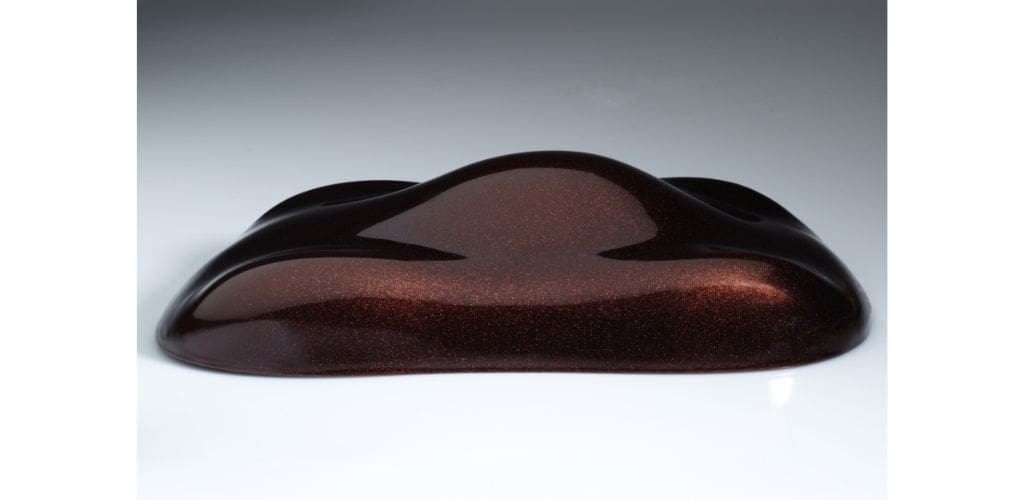The Federal Circuit has vacated and remanded a decision by the Patent Trial and Appeal Board (PTAB or Board), finding that it failed to consider the entire record on the prior art status of a sample.
The case is CQV Co., Ltd. v. Merck Patent GmbH.
Merck owns US Patent No. 10,647,861, titled “α-Alumina Flakes.”
As the court explains,
It relates to α-Al2O3 (“alpha-alumina”) flakes with particular characteristics and to the flakes’ use “in paints, industrial coatings, automotive coatings, printing inks, cosmetic formulations[,] and in particular as transparent substrate for effect pigments.” ’861 patent col. 1 ll. 3–6. Pearlescent pigments based on transparent flakes, such as the alphaalumina flakes described in the ’861 patent, can be used to “[i]mpart[] a pearlescent luster, metallic luster, color flop[,] or multicolor effect.” Id. col. 1 ll. 7–9. The ’861 patent describes transparent alumina flakes that, compared to the prior art, “show improved optical properties,” such as “increased chroma, higher luster, lower haze[,] and excellent finishing” while retaining “a high chemical stability.”
Claim 1 of the patent is illustrative of the claims on appeal:
- Al2O3 flakes having a particle thickness of 130– 400 nm, a D50-value of 15–30 μm, a D90-value of 30– 45 μm, a D10-value of <9.5 μm and wherein the flakes are α-alumina flakes.
In 2021, CQV petitioned the Board for post-grant review of claims 1–22 of the ’861 patent. CQV asserted that various combinations of prior art references rendered the claims obvious.
Specifically, CQV challenged claims 1–17 and 21 as obvious in view of Xirallic® and other references
Xirallic is “an alumina effect pigment made of aluminum oxide platelets covered with titanium oxide that shows a strong glitter effect with a distinct shimmering behavior.” It was developed at Merck KGaA in Japan.
(Because the pigment was produced at only a single plant in Onahama, production was severally curtailed following the 2011 Tōhoku earthquake and tsunami.)
During proceedings before the PTAB, the parties disputed the critical date of the ’861 patent. They also disputed the prior art status of the relevant samples of Xirallic®.
However, CQV agreed that it was acceptable for the Board to focus its analysis on a particular lot of Xirallic® identified as “Sample C.”
In its 2022 final written decision, the Board held that CQV had “not supported adequately its contention that the Xirallic lot used for Sample C qualifies as prior art” under either alleged critical date.
The Board thus concluded that CQV hadn’t proven that the challenged claims were unpatentable.
CQV appealed.
The Federal Circuit found that the PTAB had failed to “consider the entirety of the record.”
In particular, the court found that the Board discounted
(1) general statements about the availability of the Xirallic® product line that were not linked to Sample C,…;
(2) the testimony of Mr. Choi that CQV purchased Sample C in about October 2011,…; and
(3) evidence from CQV that Merck manufactured Sample C in 2007 and is incentivized to sell a batch as soon as possible so as not to waste shelf-life.
As a result,
The Board held that these pieces of evidence, taken together and unrebutted, failed to establish that Sample C was probably available to the public before April 30, 2012.
This, said the court, was in error. Further, the Board failed to explain its reasoning, which was problematic because:
[T]he Board is obligated to ‘articulate a satisfactory explanation for its action including a rational connection between the facts found and the choice made.’
Said the court,
A Board decision that meets that standard allows us to “reasonably discern that [the Board] followed a proper path, even if that path is less than perfectly clear.”
On remand, said the court,
the Board should carefully consider and explain whether, taken as a whole, the evidence establishes that Sample C was more likely than not available as of the alleged critical dates. In so doing, it should be careful not to overstate the required degree of certainty.
Just like the haiku above, we like to keep our posts short and sweet. Hopefully, you found this bite-sized information helpful. If you would like more information, please do not hesitate to contact us here: https://aeonlaw.com/contact-us/.


